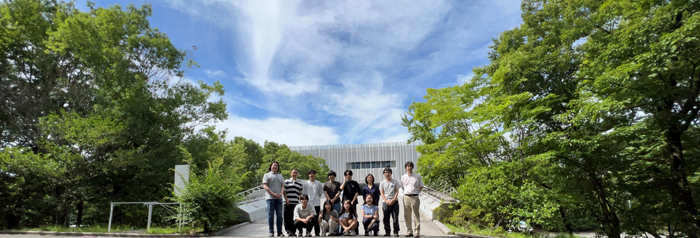Laboratory of Life Science for Extremophiles
Faculty of Human Sciences, Waseda University

Laboratory of Life Science for Extremophiles
This laboratory researches to contribute to constructing a sustainable human society,
such as achieving SDGs and carbon neutrality, by solving environmental and resource problems
through enzymes and proteins. The research includes studying enzymes and proteins derived from
commonly encountered organisms and extremophiles, developing artificially modified enzymes, and
exploring beneficial enzymes from extinct species. In addition, the laboratory also researches
the origins and early evolution of life and the Earth's primordial environment to investigate
the common roots of all living organisms, from humans to microorganisms.
Principle Investigator
Satoshi Akanuma
Professor at Faculty of Human Sciences, Waseda University
Doctor of Science
Contact Information
Waseda University, Tokorozawa Campus, 2-579-15 Mikajima, Tokorozawa,
Saitama 359-1192, Japan
Building 100, 5F, Room 530 (office), Room 596 (laboratory)
Tel, +81-4-2947-6727 (ext.76-3530) or +81-4-2947-6811 (ext.76-3596)
E-mail:akanuma @ waseda.jp (Please remove spaces before and after the @ symbol)
Research
This laboratory conducts research in two main areas: developing enzymes that are useful for human society, and studying the origins of life and the early Earth environment.
Developing enzymes useful for human society
Our research aims to utilize environmentally friendly biocatalysts, namely enzymes for environmental, food, pharmaceutical synthesis, and other applications, by developing technologies that modify enzyme functions and properties. In particular, we are striving to create enzymes that combine heat resistance and low-temperature activity. We also work on developing enzymes that contribute to solving environmental and resource problems and achieving carbon neutrality, such as plastic-degrading enzymes.
Study on the origin of life
What was the first life to appear on Earth about 4 billion years ago? By tracing the evolution of genes and proteins of current organisms, we aim to resurrect and analyze the genes and proteins of ancestral organisms to reveal the appearance of the oldest life on Earth. We also study the early Earth environment that gave the origin of life through experiments. In addition, we focus on the "letters" of life, the amino acids, to explore clues to the origin of life and to investigate whether life can be born from amino acids found in the universe.